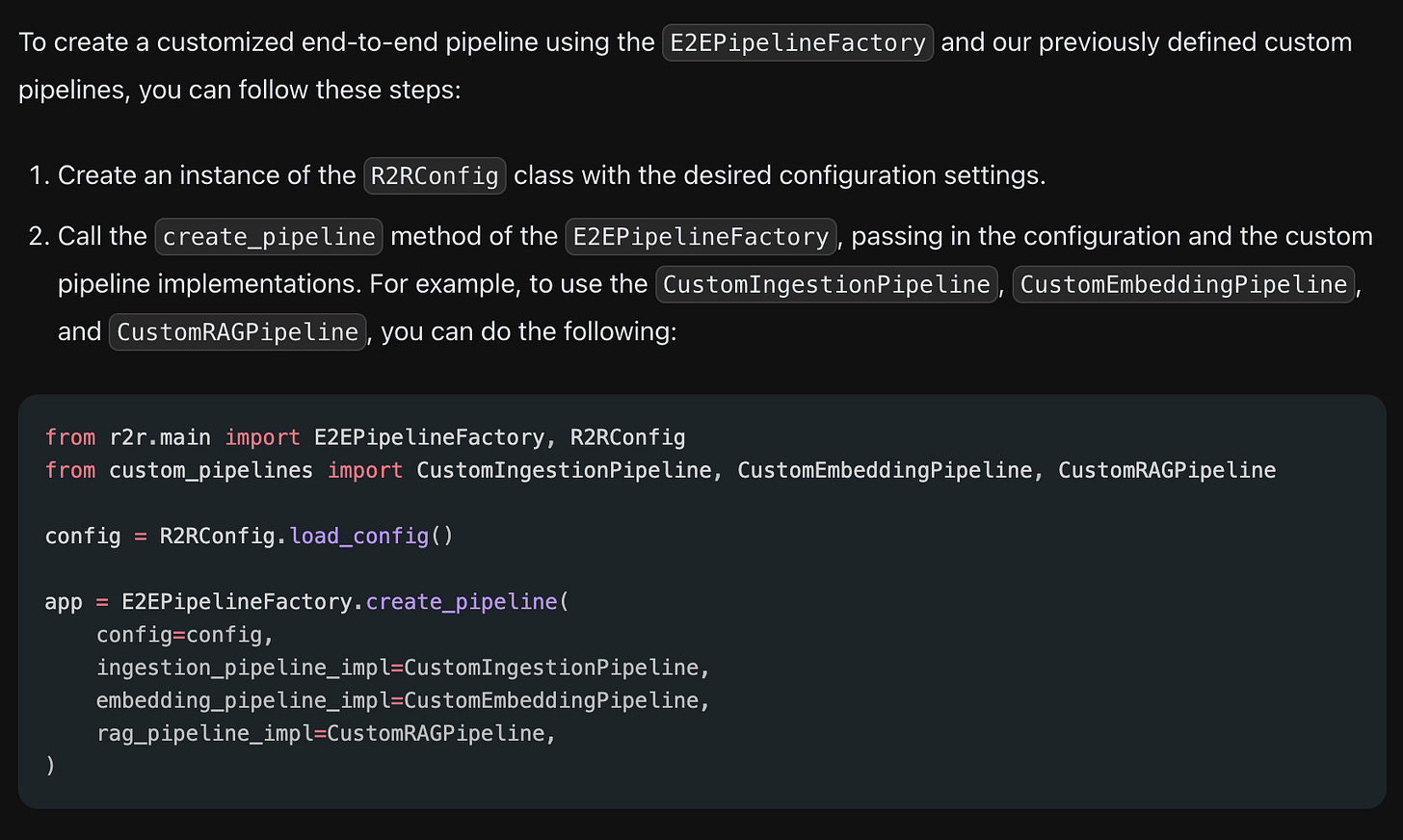Introducing R2R: A Framework for building, deploying, and optimizing RAG Systems
R2R, which stands for "RAG to Riches," is an open-source Python framework designed to simplify the development, deployment and optimization of Retrieval-Augmented Generation (RAG) systems.
R2R aims to bridge the gap between experimental RAG implementations and scaleable production-ready systems. It provides a comprehensive framework that streamlines the entire lifecycle of a RAG system, from ingesting files and performing search to streaming RAG completions. The framework includes a basic RAG pipeline and an associated server application, making it easier to deploy and utilize RAG models in real-world scenarios.
As the field of Large Language Models (LLMs) continues to advance, the importance of retrieval in building effective applications has become increasingly apparent. However, many teams face challenges when implementing and improving their RAG systems, often relying on ad hoc approaches that can hinder progress and scalability.
By encapsulating these core functionalities, R2R enables developers to quickly set up and deploy their RAG systems, reducing the time and effort required to go from experimentation to production.
To further simplify the deployment process, R2R's logic can be containerized, facilitating fast and efficient cloud deployment. This containerization approach ensures that the RAG system can be easily scaled and managed in various cloud environments, making it more accessible to teams of different sizes and resources.
R2R's flexible standardization enables developers to easily extend and customize their pipelines. The framework offers a modular structure that can be adapted to deploy custom pipelines, while still maintaining a consistent overall architecture. This flexibility is further enhanced by R2R's support for versioning, which ensures that work remains reproducible and traceable throughout the development process.
Another significant advantage of R2R is its extensibility. The framework is designed to integrate seamlessly with various databases, LLMs, and embedding models, allowing developers to choose the components that best suit their specific requirements. This open and modular approach empowers teams to experiment with different configurations and find the optimal setup for their RAG systems.
As an open-source project, R2R is driven by and for the AI community. The framework aims to help startups and enterprises quickly build and deploy RAG systems, leveraging the collective knowledge and expertise of the community. The R2R team is committed to providing deployment support, assisting developers in building their RAG systems end-to-end.
Getting started with R2R is straightforward, with both quick and full installation guides available. The framework includes a basic example that demonstrates how to set up a RAG pipeline and interact with it using a client. Developers can easily customize their pipelines using the E2EPipelineFactory and custom implementations, tailoring the system to their specific needs. Continue to the documentation here to learn more about installation, or read on to learn more about the framework at a high level.
At the core of R2R are its abstractions and pipelines. The Ingestion Pipeline is responsible for processing and converting documents into a plaintext format, supporting various data types such as TXT, JSON, HTML, and PDF. The Embedding Pipeline handles chunking, transforming, and embedding documents, preparing them for retrieval. The RAG Pipeline is responsible for retrieving relevant documents based on a query and generating responses using the retrieved documents as context. The Evaluation Pipeline assesses the quality of the generated completions, providing insights into the system's performance. Finally, R2R includes comprehensive logging capabilities to track and monitor pipeline execution.
R2R offers a default configuration file (config.json) that provides settings for various components such as the database provider, LLM settings, embedding settings, and parsing logic. Developers can easily customize this configuration to match their specific requirements, ensuring that the framework adapts to their needs.
The R2R community is a vital aspect of the framework's success. Developers are encouraged to join the Discord server to connect with the R2R team and other developers, seek support, and share their experiences and best practices. The community serves as a platform for collaboration, fostering the exchange of ideas and enabling developers to learn from one another.
In conclusion, R2R is a powerful framework that streamlines the development of RAG systems, making it easier for developers to build and deploy production-ready applications. By providing a structured approach, flexible customization options, and extensive community support, R2R empowers developers to focus on creating innovative and effective RAG systems. As the field of LLMs continues to evolve, R2R is well-positioned to support developers in harnessing the power of retrieval-augmented generation and building the next generation of AI applications.






